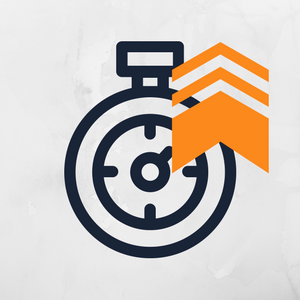Are you up to date with the new page speed trends?
Page Speed is one of the most important elements of creating a user-friendly web browsing experience. It is also essential when it comes to search engine rankings. While average load times change based on a page’s industry and location, there are a few general trends that apply to all businesses with an online presence.
There is no better time than right now for webmasters to evaluate their average load times and learn a few new tips and tricks for improving page speeds across their sites. Read on to find out about the next anticipated trends.
It Will Be All About Mobile

Google released the results of research conducted in early 2017 that proved the majority of mobile browsers, 53% of them to be exact, will leave a mobile page after just three seconds if the page has not begun to load. Given that average loading times for mobile landing pages are still coming in at just over 20 seconds, that’s bad news for online marketers.
So, what’s the catch? It’s actually quite simple. Most mobile pages do not load fully until almost half a minute after browsers have begun to use these mobile sites.
Webmasters can use this information to their advantage by constructing sites designed to begin loading as quickly as possible even if it takes a little bit longer for ads and plugins to load fully. Any webmaster who is unsure as to whether it’s worth redesigning a page to load faster can check industry averages to find out how their pages stand up to the competition. If their load times are coming in below industry averages, it’s time to consider starting the new year with a redesigned site.
Average Size
There is undeniably a direct correlation between site speed and site size. Webmasters who are looking to improve load times can start by checking size-correlated industry averages.
The newest recommendation is that all pages be under 500 KB to improve loading times. Given that average values hover around 1.88 MB, it should go without saying that most webmasters have their work cut out for them. Companies can begin optimizing file
Number of Resources

Standard resource numbers among most industries still average more than 100, yet experts recommend that this number be under 50 this year. Webmasters should note that resources can often be combined or even eliminated completely through a careful redesign. If done properly, this optimization will result in far lower resource numbers and consequently much faster page loading speeds.
Server Delays
TTFB, or time to first byte, plays almost as large a role in search engine optimization rankings as page loading time. Industry research has shown a clear correlation between TTFB and higher rankings in major search engines, and while it has yet to be proven outright that decreasing a site’s TTFB improves its search engine ranking, there is enough of an obvious correlation to merit further discussion and consideration of this important, yet frequently overlooked, issue.
Just like average page speeds, different industries also have different TTFB averages. The average of these values across most industries currently comes in at around 2.11 seconds, yet the recommendation now is that webmasters keep their TTFB under 1.3 seconds. Those who are unsure about current TTFB values can read on for more relevant information.
Helpful Resources

When optimizing pages for increased loading times and TTFB values, be sure to keep industry standards in mind. The best way to remain competitive in search engine rankings and user-friendliness is to ensure that each page at least meets, and ideally exceeds, these standards now before the competition catches up.
- About the Author
- Latest Posts
Claudia is a senior editor and contributor to Biteno GmbH. She loves to review new technology and enjoys travelling in her free time.







